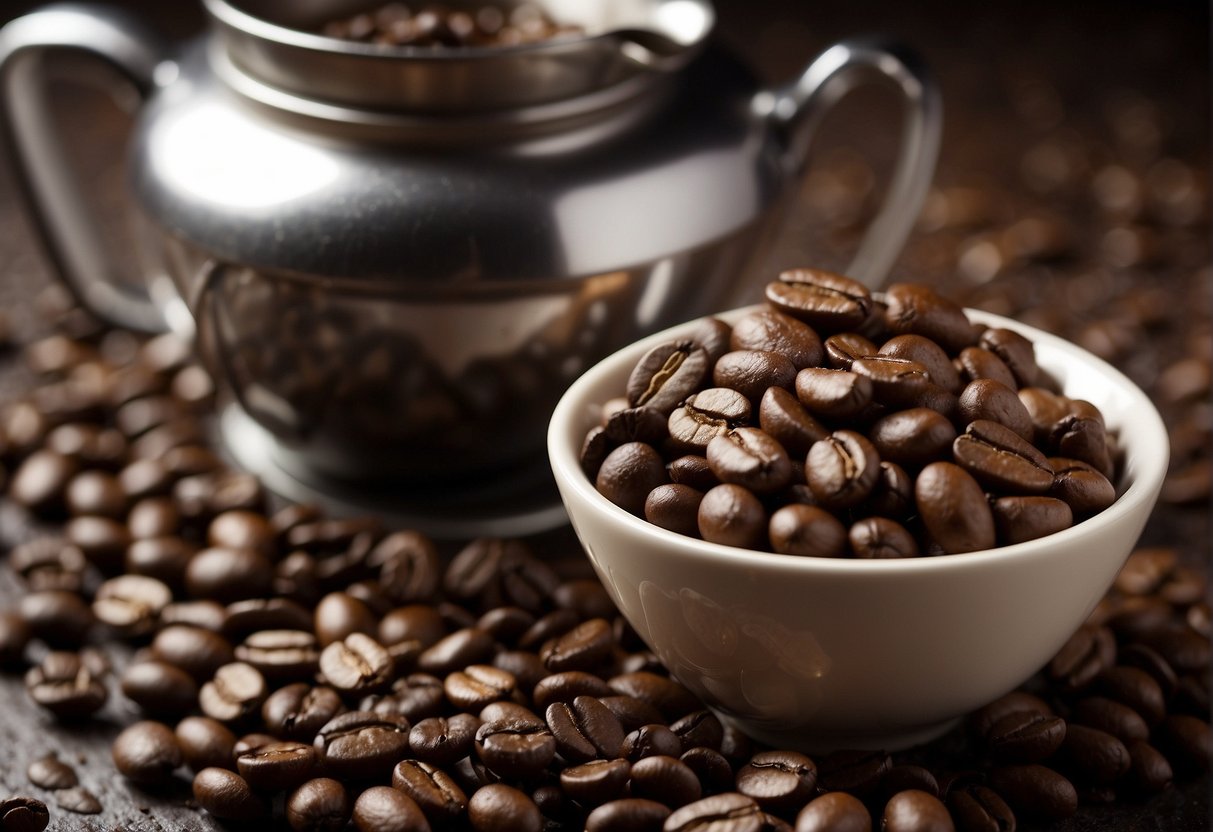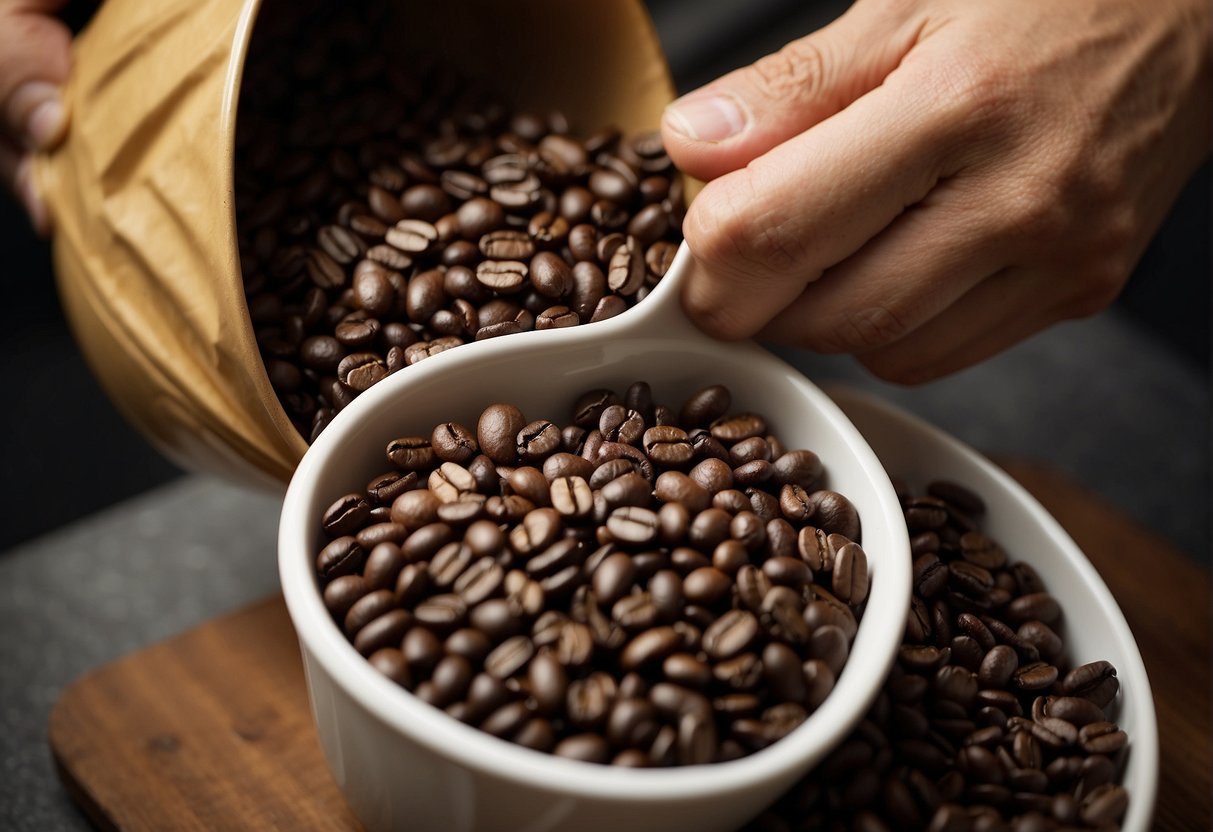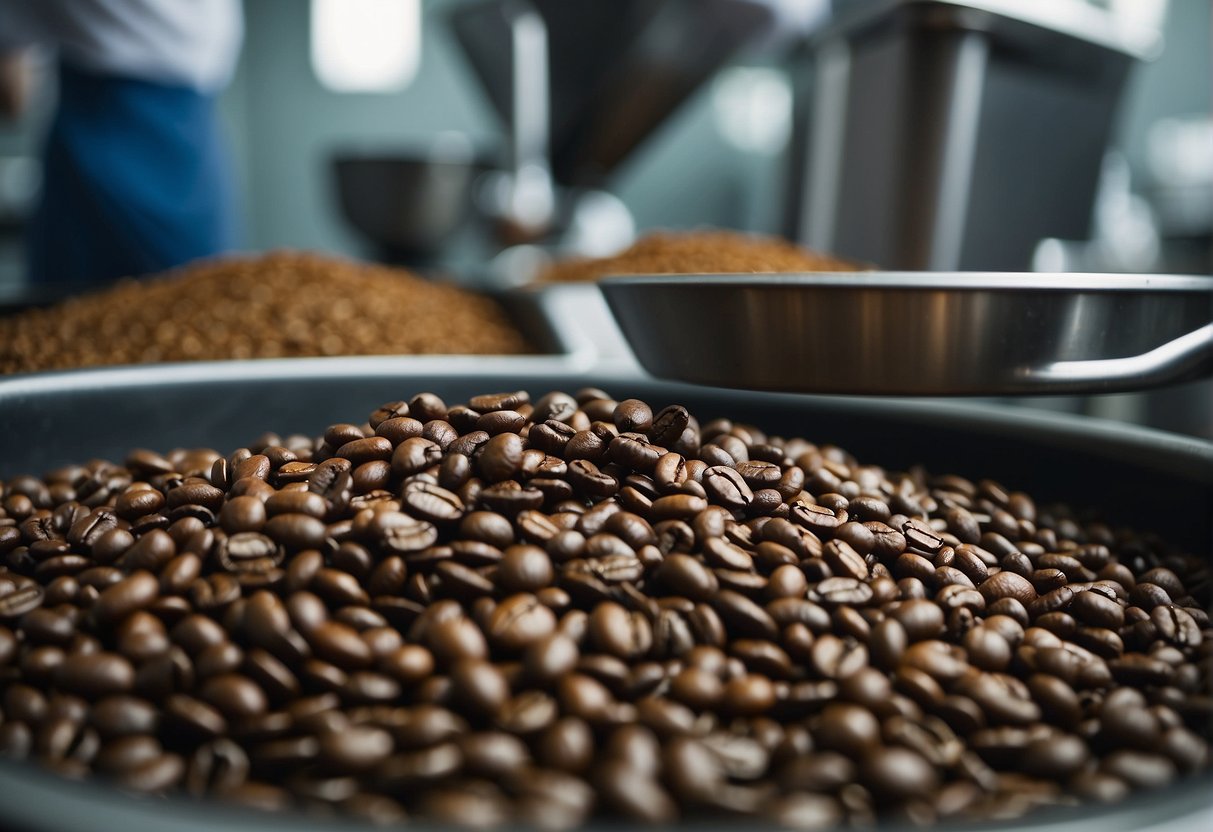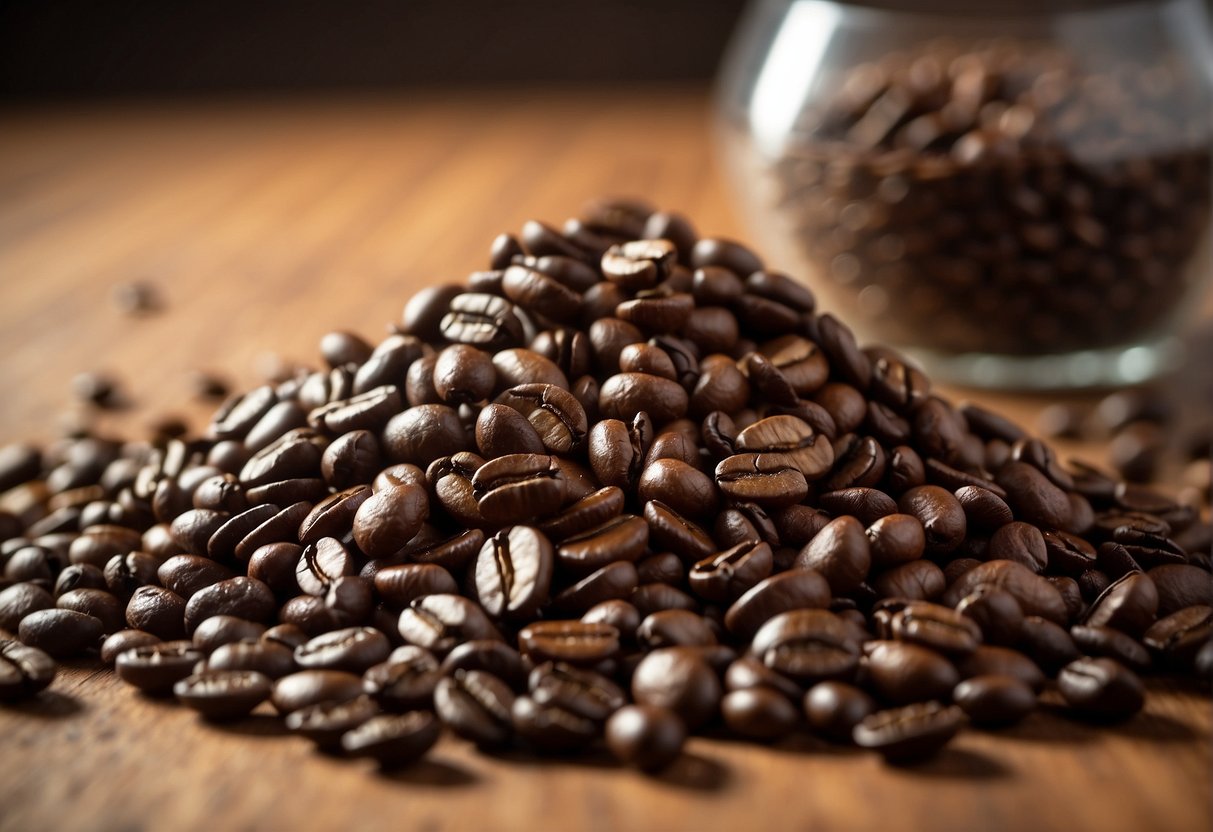Coffee beans come in various forms, from the glossy, oily exteriors that catch the eye to the drier, matte-like beans that might seem less appealing at first glance. Understanding the differences between these two can greatly enhance your coffee experience. The surface of the bean can tell you a lot about its character, flavor profile, and the best brewing methods to use. It’s not just an aesthetic detail—oily and dry coffee beans behave differently right from the grinder to the cup.

The oils on coffee beans aren’t just for show; they are a direct indicator of the coffee’s freshness and the roasting process it has undergone. Generally, as coffee beans are roasted darker, they start to exude more oil. However, it’s not just the roasting level that determines the oiliness; factors such as the age of the bean and how it’s been stored also come into play. On the other hand, beans with a dry appearance could suggest a lighter roast, preserving the bean’s original flavor characteristics.
When choosing between oily and dry coffee beans, think about your personal taste preference and the kind of brewing method you’ll be using. Oily beans might clog up a super-automatic espresso machine but could be perfect for a French Press. Conversely, drier beans might be ideal for a pour-over or an AeroPress. Each type has its unique qualities that cater to different taste buds and preparation styles.
Understanding Coffee Beans
https://www.youtube.com/watch?v=N6BJVM5tvnw&embed=true
Selecting the right coffee beans is essential for the perfect cup of coffee. The flavor, aroma, and body of your coffee are significantly influenced by the type of beans and their roast level.
The Basics of Coffee Beans
Coffee beans are the seeds of the coffee plant, typically the species Coffea arabica or Coffea canephora (robusta). Green coffee beans are the raw seeds that have been separated from the fruit and not yet roasted. Your coffee’s unique flavor profiles begin here, with the bean’s natural characteristics, which include its inherent oils and acids that contribute to the final taste.
- Categories of Beans:
- Arabica: Known for their sweet, soft taste and higher acidity.
- Robusta: Often have a stronger, more bitter flavor with a grain-like overtone and nutty aftertaste.
Roast Levels and Characteristics
The roast level of coffee beans affects their moisture content, oiliness, and flavor. Roasting is a heat process that turns green coffee into the brown beans we all know. As coffee beans roast, they lose moisture and become larger. The oils within the beans start to emerge at certain roast levels, giving them a glossy sheen.
- Light Roast:
- Appearance: Light brown, dry surface with no oily sheen.
- Flavor: More acidic, higher concentration of original bean flavors, and a milder body.
- Medium Roast:
- Appearance: Medium brown, may have a slight oily sheen.
- Flavor: Well-balanced in acidity, body, and flavor, with more pronounced and nuanced flavors compared to light roasts.
- Dark Roast:
- Appearance: Dark brown or black, distinctly oily sheen on the surface.
- Flavor: Bold flavor, full-bodied, often with a decrease in acidity and increased bitterness. Roasting has produced new flavors that can be spicy, chocolatey, or earthy.
Table: Roast Levels and Their Characteristics
| Roast Level | Bean Appearance | Flavor Qualities |
|---|---|---|
| Light | Light brown, dry | Acidic, mild body, aromatic |
| Medium | Medium brown, possible slight sheen | Balanced acidity, nuanced flavors |
| Dark | Dark brown, oily | Bold, full-bodied, less acidic |
Understanding the differences between oily and dry coffee beans comes down to their roasting process. Oily coffee beans have been roasted longer, allowing the oils to come to the surface, while dry beans have not reached this stage, preserving their original characteristics. Your preference for oily or dry beans will greatly depend on the flavor and body you enjoy in your coffee.
Impact of Roast on Oiliness
https://www.youtube.com/watch?v=MnYL454PYG0&embed=true
When you roast coffee beans, their oil content and surface appearance change significantly. This transformation is pivotal to the flavor and freshness of your coffee.
How Roasting Affects Oil Levels
During roasting, the heat causes chemical reactions inside the coffee beans, leading to the development of oils. The longer the beans are roasted, the more oils are brought to the surface, which is why darker roasts tend to look shinier than lighter ones. Here’s what you need to know:
- Light Roasts: Typically retain more moisture, resulting in a drier surface with less visible oil.
- Medium Roasts: Have a balanced oil level, with oils beginning to emerge on the surface of the bean.
- Dark Roasts: Display a significant amount of oil on the surface due to higher temperatures and longer roast times.
Roasting Process and Oil Production
The roasting process determines the oiliness of the coffee bean to a great extent. As beans are roasted:
- Heat triggers the breakdown of fatty acid triglycerides stored within the beans.
- This breakdown releases oil to the surface of the bean.
- Concurrently, carbon dioxide is produced, aiding in forcing the oil out.
- The bean’s structure becomes more porous, allowing oil to migrate outwards.
Remember, the roast level you choose will affect the oiliness and, by extension, the flavor profile of your coffee.
Preparation and Brewing Techniques

When preparing your coffee, the level of bean oiliness and your chosen brewing method will significantly influence the grind and overall brewing process.
Grinding and Brew Method Impact
Before brewing, you must consider the grind size appropriate for your device. A fine grind is generally ideal for espresso, which requires a quick extraction. A burr grinder is one of the best tools you can use, as it provides a consistent grind. For French press or pour-over, a coarser grind is preferable. The table below outlines suitable grind sizes for different brewing methods:
| Brewing Method | Grind Size |
|---|---|
| Espresso | Fine |
| French Press | Coarse |
| Pour-over | Medium-Coarse |
| Drip Coffee | Medium |
Remember, the grind should always match your brewing method to optimize extraction and flavor.
Adjusting Brewing for Bean Oiliness
Your brewing method might require adjustment depending on the oiliness of your beans. Oily beans are often best suited for methods like drip coffee or French press, where the oils can enhance the brew’s body and flavor. Here’s how you can adjust:
- For Oily Beans:
- Use a slightly coarser grind to prevent over-extraction and clogging of your equipment.
- Consider a longer extraction time to fully capture the flavors.
- For Dry Beans:
- Opt for a finer grind to maximize the surface area and flavor extraction.
- Aim for a quicker brew to prevent under-extraction of the subtle flavors.
Keep these adjustments in mind to enhance your brew based on the oiliness of your coffee beans.
Maintaining Quality and Freshness

The key to savoring your coffee at its best is to prevent the beans from going stale, which hinges on how you store them and manage their exposure to elements that degrade their quality.
Storage Solutions for Coffee Preservation
Freshness is highly dependent on reducing exposure to oxygen and moisture. To extend the shelf life of your coffee beans, consider the following storage tips:
- Airtight Containers: Invest in quality, airtight containers to keep oxygen at bay.
- Location: Store your coffee in a cool, dark place to prevent heat and light from increasing the moisture content.
- Volume: Minimize the container’s air volume by choosing a size appropriate for the amount of coffee you have.
Remember, roasting date is a pivotal indicator of freshness — always check this on your coffee packaging.
Avoiding Common Pitfalls with Oily Beans
Oily coffee beans are often fresher but can create specific challenges:
- Cleanliness: Regularly clean your storage container to prevent oil buildup, which can make beans go stale faster.
- Usage: Use oily beans quicker than dry ones as they can become stale more rapidly.
- No Fridge: Never store oily beans in the refrigerator; the fluctuating temperatures and moisture can ruin them.
By being mindful of these factors, you can relish your coffee at its peak.
Cleaning and Equipment Care

Proper maintenance of your coffee equipment is crucial for ensuring the longevity of your machines and the quality of your coffee, whether you use oily or dry beans. Both types of beans leave residue that can affect machine performance over time.
Preventing and Addressing Clogs
Oily Coffee Beans: Oily beans can lead to clogging, especially in automatic espresso machines and coffee grinders. To prevent this:
- Empty and clean the drip tray and grounds bin after each use.
- Wipe the grinder burrs and brew group weekly, or after every 20 shots with a dry, soft brush.
- Use a specialized grinder cleaner monthly to remove oil buildup.
Dry Coffee Beans: While less prone to clogging, they still necessitate routine unclogging efforts for metal filters and paper filters.
- Soak and rinse metal filters in a warm, soapy solution to dislodge fine particles.
- Replace paper filters after each use to prevent taste transfer and potential clogs in future brews.
Coffee Machines:
- Descale your machine every 3-6 months, or as recommended by the manufacturer, to prevent mineral buildup which can cause clogs.
- Run a cleansing brew without coffee through your coffee machine after using oily beans to remove any oily residue.
Routine Maintenance for Coffee Gear
Coffee Grinders:
- For burr grinders, clean the burrs every month using a brush and a dedicated grinder cleaner.
- Blade grinders require you to simply empty and wipe them out after each use.
Automatic Espresso Machines:
- Run the machine’s cleaning cycle with a cleaning tablet as directed by the machine’s owner manual.
- Lubricate the brew group every few months or according to your machine’s instructions to keep it operating smoothly.
General Tips:
- Always use fresh water for brewing, which not only impacts taste but also machine health.
- Regularly check and replace any worn out seals or gaskets to prevent leaks and protect sensitive components.
Regular cleaning and maintenance ensure your coffee gear stays in top condition, providing you with the best possible cup every time.
Frequently Asked Questions

In this section, you’ll find answers to common questions about the nature of coffee beans and how their oil levels can affect your brewing experience.
What determines whether coffee beans are oily or dry?
The oiliness of coffee beans is primarily determined by the degree of roast. Darker roasts tend to bring more oils to the surface, while lighter roasts usually appear dryer.
Can using oily coffee beans affect my espresso machine’s performance?
Yes, using oily coffee beans can lead to clogs in your espresso machine’s grinder and filters, which may require more frequent cleaning or even decrease the lifespan of the machine.
How can I tell if my coffee beans are too oily?
Your coffee beans might be too oily if they leave a greasy residue on your hands or clump together. This can indicate over-roasting or potentially degraded freshness.
Is there a difference in taste between oily and dry coffee beans?
Oily coffee beans often have a bold, rich flavor profile, while dry beans can offer a wider range of subtle flavors and acidity, depending on the roast.
What are the best practices for storing coffee beans to maintain their quality?
To maintain quality, store your coffee beans in an airtight container away from light, heat, and moisture to prevent them from becoming too oily or dry.
Does the roast level of coffee beans impact their oiliness?
Yes, the roast level directly impacts the oiliness of coffee beans. Dark roasts will typically have a more pronounced oil sheen, compared to medium or light roasts.
